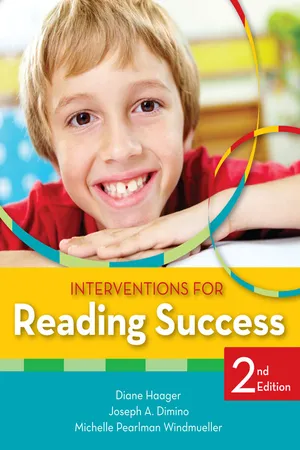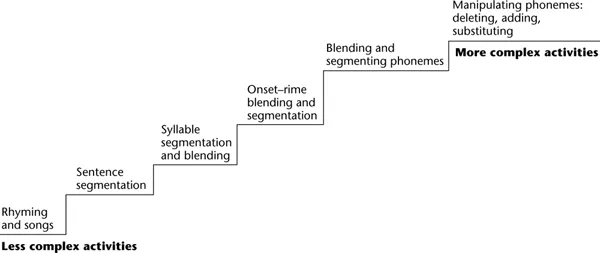
- 486 pages
- English
- ePUB (mobile friendly)
- Available on iOS & Android
Interventions for Reading Success
About This Book
Help transform struggling K–3 students into skillful, enthusiastic readers—in just 20 to 30 minutes a day! It's all possible with the NEW edition of this bestselling curriculum supplement, your key to helping all students grasp the five Big Ideas of early literacy: phonological awareness, the alphabetic principle, fluency, vocabulary, and comprehension. Updated with new activities and the very latest on today's hot topics in literacy, this book gives you more than 130 research-based, teacher-tested activities you can use right now, with any core reading program. They're a perfect fit with response to intervention—use them with your entire class, small groups, or individual students who need more intensive support. Creative and versatile, these interventions are just what you need to help struggling students meet grade level standards and spark a lifelong love of reading.
LEARN HOW TO:
- Align reading instruction with Common Core State Standards
- Teach all the fundamentals of reading in a time-efficient way
- Use the RTI model to scaffold interventions (includes examples for Tier 1, Tier 2, and Tier 3 instruction)
- Deliver evidence-based instruction with confidence, with step-by-step instructional sequences you can use as is or modify as needed
- Plan assessment and make sound decisions based on data
- Strengthen the home-school connection with take-home activities parents can use with their children
PRACTICAL MATERIALS: Copy-ready templates of activity materials, such as a blank bingo board, color tiles, letter tiles, word cards, word banks, and graphic organizers. Also includes more than 70 Home-School Connection activities. Materials are photocopiable and printable from the web.
Frequently asked questions
Information
SECTION II
Classroom
Activities
CHAPTER 5
Phonological Awareness
INTRODUCTION

Table of contents
- Cover Page
- Title Page
- Copyright Page
- Contents
- About the Reproducible Materials
- About the Authors
- Acknowledgments
- Section I Overview
- Section II Classroom Activities
- Section III Home–School Connection Activities
- References
- Index